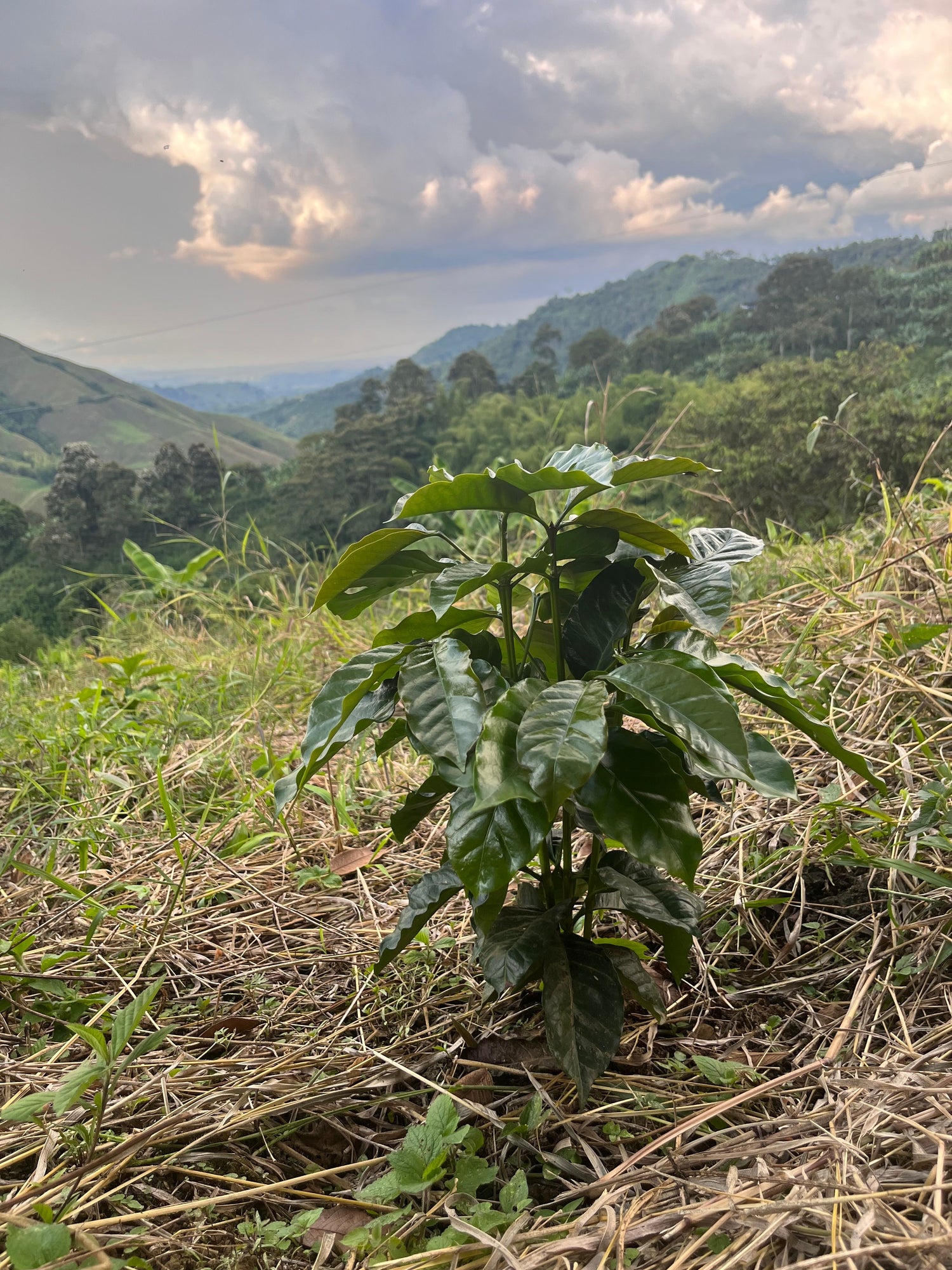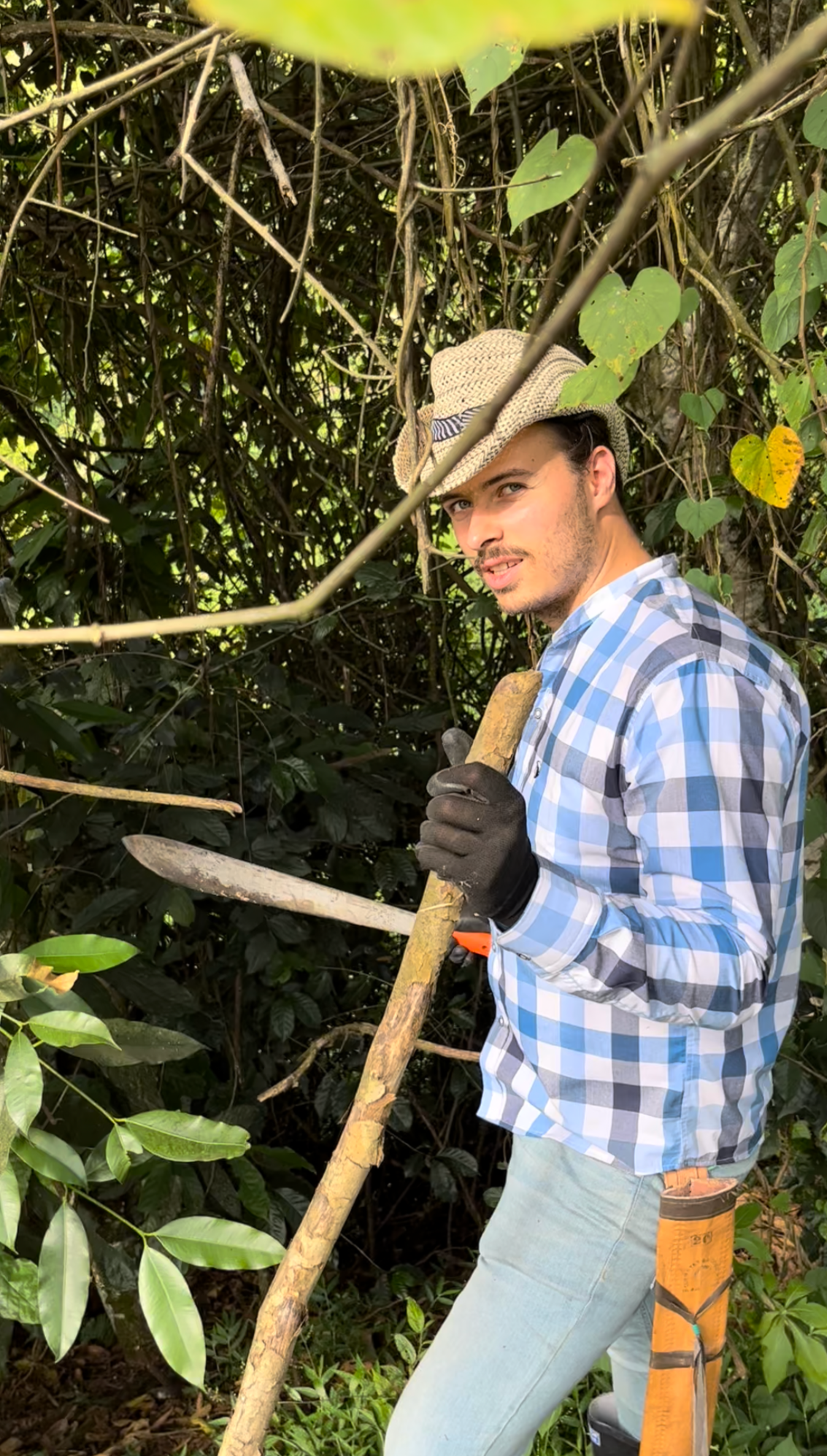Coffee overshadows almost everything. It is by far the leader among all hot beverage preparations made from plants. This can easily be seen from the annual harvest volumes, which for 2022, for example, were 10.78 million tons of green coffee worldwide. Both cocoa with 4.9 million tons and tea with 2.9 million tons are far behind. But what is the secret of the coffee bean and where does it come from? We want to get to the bottom of this and a few other important questions here.
Contents:
- Where does coffee come from?
- Who invented coffee?
- Who discovered coffee?
- Which country invented coffee
- Where does coffee originally come from?
- Who brought coffee to Europe?
- How did the Europass coffee culture come about?
Where does coffee come from?
Nowadays, coffee comes from many countries around the world. Many people associate coffee with Italy, but coffee does not actually grow there. The most well-known coffee-growing countries include: Colombia, Brazil and Ethiopia.

From a botanical point of view, however, it is not so easy to assign the coffee plant to a specific area or region. At the top is the family of the Madder family, which is also known as the coffee plants or bedstraw plants. Within the Madder family, the coffee plant (Coffea) is a separate genus, which in turn is divided into 124 species. The vast majority of these 124 species originate from the African continent. This includes the most important species, the Coffea arabica. Around 60% of all types of coffee in the world come from the Coffea arabica.
In second place in terms of production volume is the species Coffea canephora, colloquially known as "Robusta". It is also native to Africa and accounts for around 36% of world production. The remaining 4% is mainly divided into the species Coffea liberica, Coffea stenophylla and various hybrids. Coffee is no longer grown only in Africa. Coffee is grown wherever there is a climate that is favorable for the coffee plant. This is the case in the so-called coffee belt , although the growing areas vary greatly depending on the type of coffee.
Who invented coffee?
The idea of making coffee from the seeds (the coffee beans) of the Coffea plant probably came about many centuries ago in Africa. There are many legends about this, but hardly any reliable information. The first mention of coffee was in Ethiopia, in the Kaffa region in the 9th century. The Ethiopian highlands and South Sudan are also where the Arabica coffee variety was discovered.
Extracting the seeds from the red berry of the coffee bush, drying them, roasting them, crushing them and pouring hot water over them was probably not a spontaneous idea. The dried seeds of a coffee bush probably ended up in a shepherd's campfire by chance at some point. The typical smell of coffee that arose and that we all know and love must have prompted the shepherds to take a closer look at the seeds or coffee beans. Ultimately, this led to the first coffee, somewhere in Ethiopia under the African sky.
Who discovered coffee?

It was probably discovered as a wild plant in Ethiopia sometime in the 9th century, and its seeds were used to make coffee. It was cultivated as a crop from the 12th century onwards. From Ethiopia, coffee was slowly transported by caravan to the Arabian Peninsula and from there to Lebanon, the Ottoman Empire and ultimately to Europe. Documents show that the first coffee plantations were established in Yemen in the 14th century. Until the beginning of the 17th century, the Arab world had a virtual monopoly on the cultivation and trade of coffee.
If not coffee itself, the Augsburg botanist and doctor Leonhard Rauwolf was the first to describe the coffee plant and coffee itself around 1576, which he discovered on a trip to the Orient. There are very different statements about when the first coffee was drunk in Europe, and some of it can be considered legend. It is assumed that coffee slowly spread from Lebanon and the Middle East through the Balkans towards Europe, but initially only in very small quantities.
Which country invented coffee?
Coffee was first invented in the Ethiopian highlands, the country of origin. However, if someone from the 21st century had tried a cup of coffee made from the original recipe in the 12th or 13th century, their enthusiasm would certainly have been very moderate. The coffee beans were roasted, but over an open fire, which produced very different degrees of roasting. The beans were crushed with a mortar, which produced a coarse powder. Finally, hot water was simply poured over the ground coffee and it was then left to brew.
Perhaps the Ethiopian shepherds came up with the idea of filtering coffee to avoid coffee grounds. What is certain, however, is that this problem continued to plague coffee drinkers all over the world for many centuries. Depending on the country or region, coffee grounds are certainly part of drinking coffee, for example with Turkish coffee. In fact, many countries have invented their own coffee throughout history.
Where does coffee originally come from?
The coffee plant, with its 124 species, originated on the continent of Africa. If one had to choose one country, most experts would assign Ethiopia the status of the "country of origin of coffee". However, as part of the Rubiaceae family, the coffee plant has relatives all over the world. However, only the Coffea genus from Africa has a seed suitable for coffee production.
Coffee is now grown in many countries around the world in the coffee belt. Below are the top ten growing countries by weight:


Colombia is also one of the big players in coffee production and was in second place for a long time. However, the country has been focusing on high quality rather than quantity for years, so that other countries have overtaken Colombia in terms of weight. With its highlands near the equator, Colombia has excellent growing conditions for single-origin coffee.
The so-called Coffee Triangle in Colombia , often also called the Coffee Zone, was declared a UNESCO World Heritage Site in 2011. Coffee has been grown here for over 300 years and many recognized coffee experts say that the Coffea arabica grown in Colombia is of the best quality in the world.
Who brought coffee to Europe?

The most beautiful story, but probably just a story, of how coffee came to Europe comes from the second siege of Vienna by the Ottomans in 1683. During this siege, a brave Polish spy is said to have captured several hundred sacks from the retreating Ottomans and used them to open the first coffee house in Vienna. However, the story has not been proven.
The spread of coffee in Europe is linked to colonization by European countries from the 16th century onwards. Coffee was then also grown outside of Africa, for example in India, and it became a global commodity. At the same time, coffee houses opened all over Europe. The Netherlands, but also France, were the pioneers in the spread of coffee in Europe. The oldest coffee house still in operation is in Paris, the Café Procope, built in 1689.
How did Europe’s coffee culture emerge?
When we talk about coffee culture in Europe, we must also talk about coffee house culture. With the first coffee houses in the 17th and 18th centuries, social meeting places emerged in Europe that were very different from the beer bars or wine bars that had been common up to that point. Coffee stimulates without making you drunk. There was and still is discussion and argument, but not with fists. This was a thorn in the side of many a ruler, which is why there were so many, sometimes strange, bans and laws concerning coffee in the history of coffee in Europe.
It is quite certain that many revolutionary ideas or now famous stories would probably never have come about without the influence of a coffee house and coffee. Coffee is sometimes referred to as a drug and indeed quite a few people experience withdrawal symptoms without a cup of coffee for breakfast. However, this is not an addiction, but rather just a result of getting used to it. In fact, coffee is actually healthy, even if you drink 4 or 5 cups a day, as the AOK announced in a press release . According to the latest research, the more than 1,000 ingredients in coffee have a protective effect against cancer and cardiovascular disease. Good old filter coffee even performs a little better than espresso, for example.






